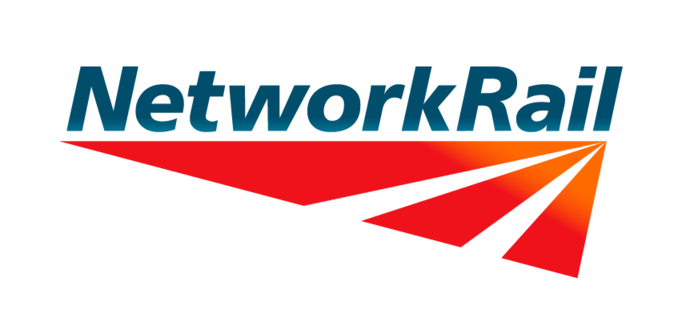faqs
Frequently asked questions on LEV Testing
I’m an employer
What does it mean if I've been informed I must have my LEV thoroughly examined and tested?
You are legally required to assess the risks to your workers from hazardous substances and decide which precautions to take to protect their health in the workplace.
If you determine that an extraction system is appropriate, you must maintain it to ensure it is working effectively.
You are required by law to have this system thoroughly examined and tested once every 14 months. You must also possess information and a commissioning report on the system to confirm that it provides suitable protection.
For more information about LEV testing click here
Why is a thorough examination and test necessary?
The main purpose of a thorough examination and test is to ensure that your employees’ health is protected so it is essential for the LEV to be working as it should.
To ascertain its level of effectiveness, you should provide the examiner with information about the intended use of the system. This information can be an initial appraisal, commissioning report or operating data supplied by the company that installed the LEV system.
It might also be available as accepted good guidance on basic processes/systems for instance from The HSE. However, if this is unavailable, you should consider employing a competent examiner to retrospectively commission the system.
Which individual(s) can perform the thorough examination and test and what responsibility do they have?
It is common for business to employ someone with relevant skills and knowledge to examine and test the LEV equipment. They should at least have the BOHS P601 testing qualification and it is desirable for them to also be P602 and P604 qualified so that if they find an issue they can advise you on how to remedy it.
The examiner will carry-out the test on your equipment using information about its intended functionality. The report will state whether your equipment is meeting the intended level of performance and, if it is not, what should be done to correct this.
It is essential to:
- Understand the examination and test report.
- Ask the examiner to clarify anything that you do not understand.
- Act on the advice in the report.
If you would like to be able to test your systems in house then Vent-Tech offers training courses in Thorough Examination and Testing (BOHS P601).
Does the examiner require specific information?
The examiner needs to know the specific purpose of the LEV system and what dust or fume it is extracting
When the LEV equipment was obtained, the supplier should have tested it to see if it was working effectively. If this did not occur however, alternative information sources might be available. Refer to What is the purpose of a thorough examination and test?.
What must the LEV examination include?
It is a legal requirement for a record of the examination and test to be kept. To comply with the legal requirement, it is highly recommended you get a report that follows the HSE Approved Code of Practice. For example, the report should comprise details of the system’s intended operating performance.
Which criteria should I use to select our examiner?
The examiner you chose must be competent and fully qualified. It is essential that they hold the P601 qualification and desirable that they hold P601 P604. Inform them if you do not understand what they are telling you and ask them to clarify.
A competent examiner will inform you beforehand if they have sufficient information to ensure the LEV system is working as intended.
LEV Competence FAQs An employer’s guide
Can you define competence?
Competence is possessing the appropriate skill, ability and knowledge required to accomplish a task properly.
What are the reasons for needing to employ or use competent people?
It is a legal requirement to ensure that employee exposure to dust and fumes is minimised and under control. Often, the only effective way of doing this is through LEV. If a competent person is not employed to maintain the LEV, then the health of employees is at risk as is your exposure to potential prosecution.
How can I tell if someone is competent?
You can identify a competent person by their skills, knowledge, qualifications and experience. A competent supplier will be able to provide references and evidence of qualifications and previous work. A good supplier like Vent-Tech will also be able to train your staff in how to maintain the LEV.
How can I find a competent person?
You can search for a competent examiner by looking at trade associations (eg: BOHS) which often maintain lists of competent LEV examiners. The ILEVE (Institute of LEV Engineers) also issues a competency card to engineers who are able to demonstrate their competency, so ask to see this card.
Ask the examiner what qualifications and experience they have, alongside the types of LEV systems they have worked on before. Inform them what you would require them to do.
Is a person competent if they have completed a training course?
A training course does not automatically make a person competent. Competence is attained through a combination of qualifications, knowledge, skills and experience. You can ask to see the competency card which is issued by ILEVE (Insititute of LEV Engineers) to engineers who can demonstrate LEV competence.
Airflow FAQs
Is it necessary for all the hoods in the LEV system to be fitted with airflow indicators?
As an employer, you must ensure that your LEV system is working effectively although there is no specific requirement to have an extraction system fitted with airflow indicators. Your LEV can stop functioning properly due to a fall in the airflow.
You can use airflow indicators at the hood to check the performance. This will reassure you that the flow rate is maintained, your employees are protected and the process is cost-effective.
If you wish to check the airflow via alternative methods, you can use an anemometer, a dust-lamp or a smoke tracer (providing the work process is operating).
However, HSE’s LEV guidance recommends fitting an airflow indicator. This is because it is currently the only method that will show the operator or supervisor if there is an immediate problem.
How do I tell if there is adequate LEV hood airflow?
Assessing the velocity of the air entering an LEV hood by hand is not possible. Therefore, an airflow indicator will make it simple and clear for the operator to determine if the airflow is adequate at the source
Which type of airflow indicator should be fitted?
A basic indicator is sufficient if the risk is low. A more sophisticated indicator is required if the substances and circumstances are more hazardous. E.g. those with an alarm or warning light.
Whichever indicator is used, it will need to display clearly whether the airflow is adequate. For more advice about the type of airflow indicator, do give us a call.
Must examiners label all the LEV systems that are tested?
It is not required for examiners to label LEV systems they test.
The legal requirement is that the employer must maintain the performance of the LEV system, and organise an examination and test at a minimum of once every 14 months.
Supervisors, operators and employers need to know if an examination has been done or when it is due. Attaching labels is an effective way of indicating if a system has been tested and whether it has passed or failed.
Must examiners label all the LEV hoods that are tested?
Yes, examiners are required to label all LEV hoods with a test record clearly visible to operators and the supervisor. The test record label can alternatively be placed near to the LEV hood e.g. near to the system switch.
Must examiners attach red labels to all failed LEV hoods?
Yes, examiners are required to place a red failed label on any hoods that have failed.
The label should include an emergency report describing the circumstances of the failure and a list of achievable actions for fixing it.
Once the employer has repaired the LEV hood or system, it needs to be checked to ensure its effectiveness. The failed label can then be replaced with a passed label.
Are there alternative methods to attaching red labels?
Labels are a clear and simple approach. However, an alternative method can be used as long as it still conveys to the employer and operators that the equipment is in need of attention..
















